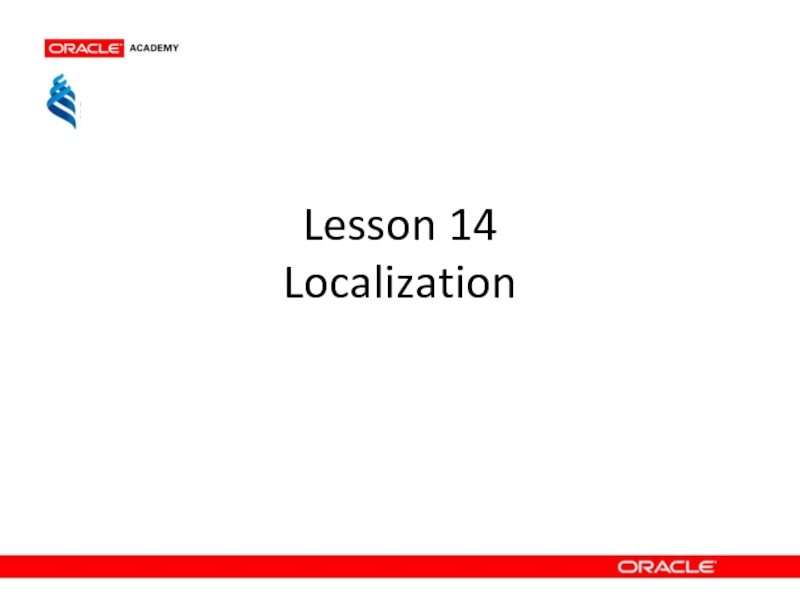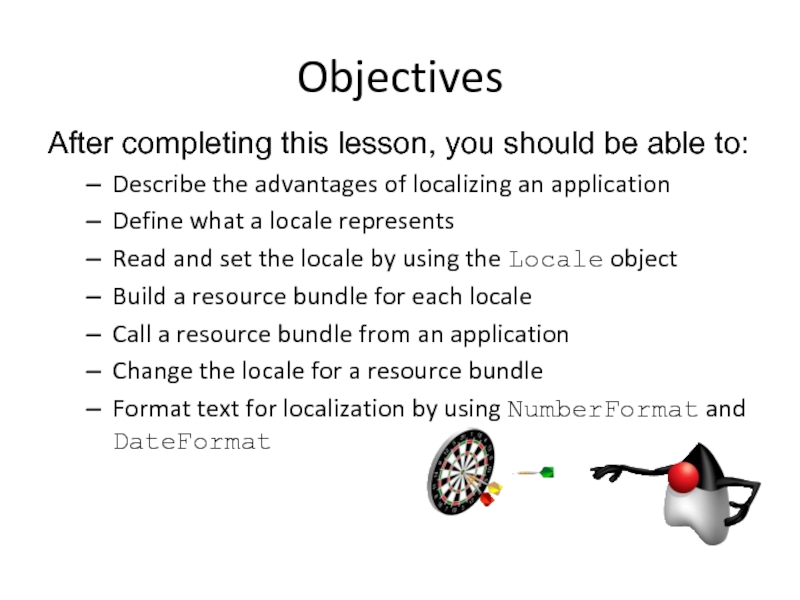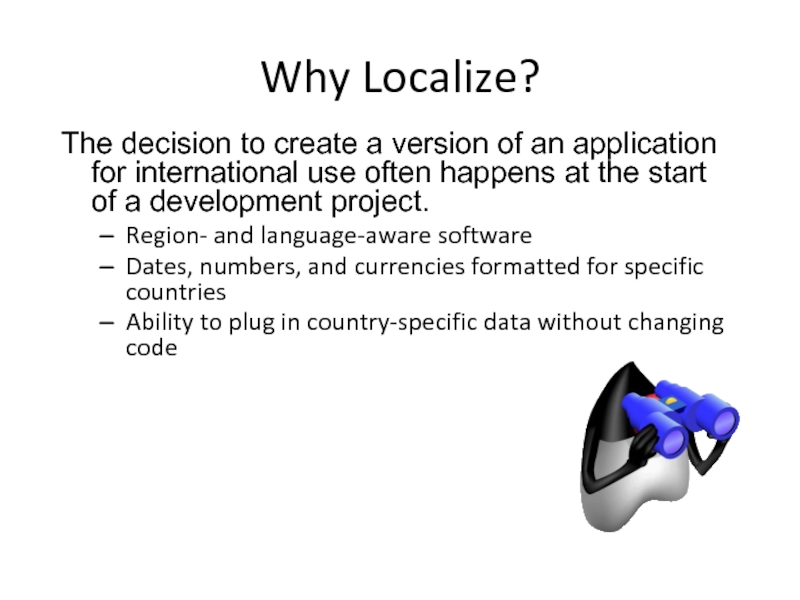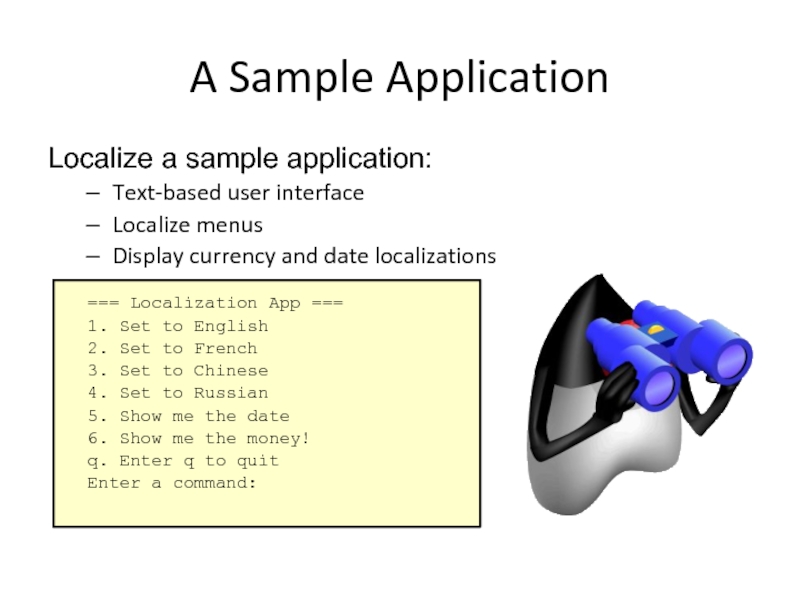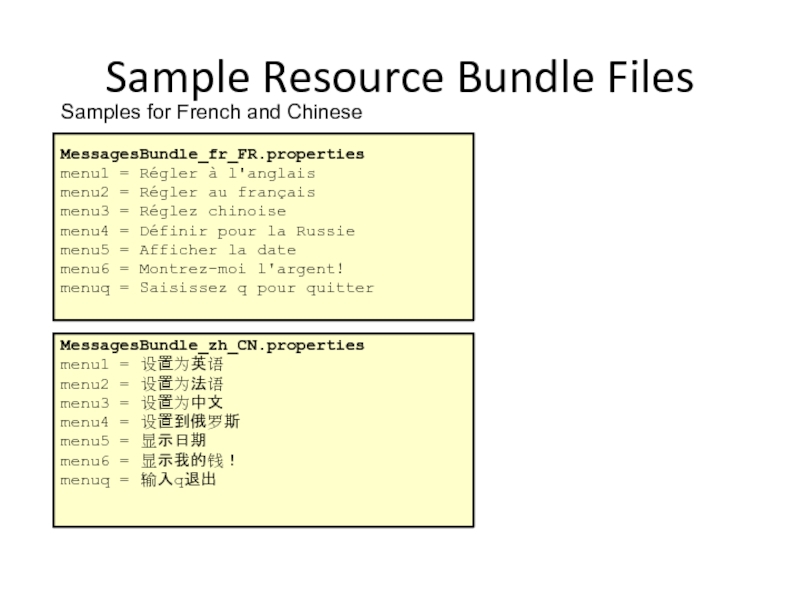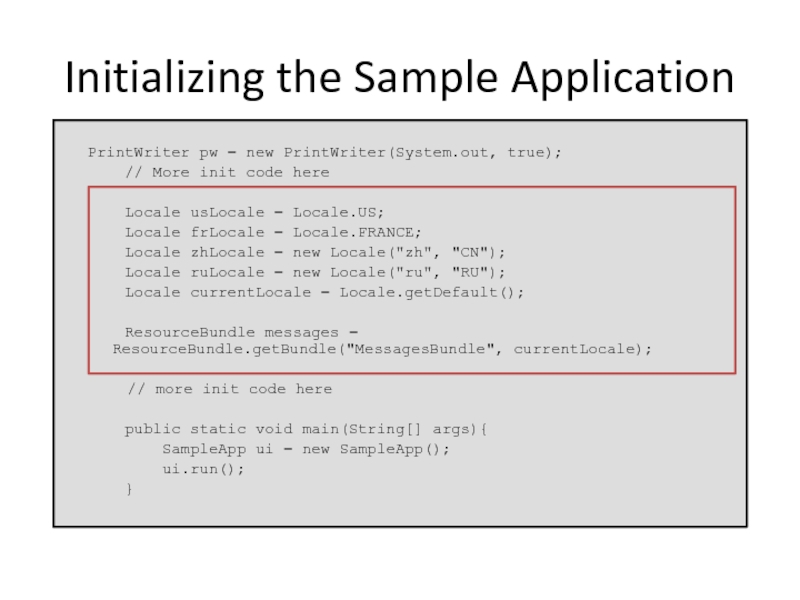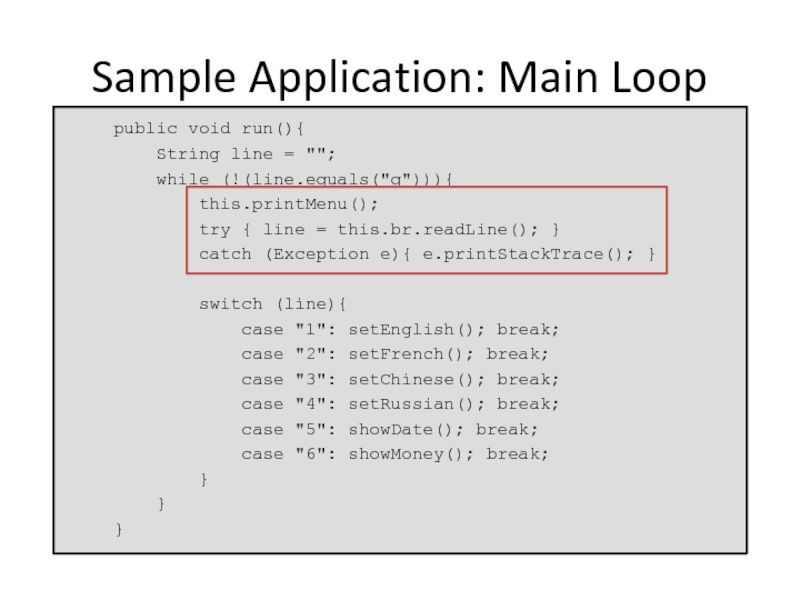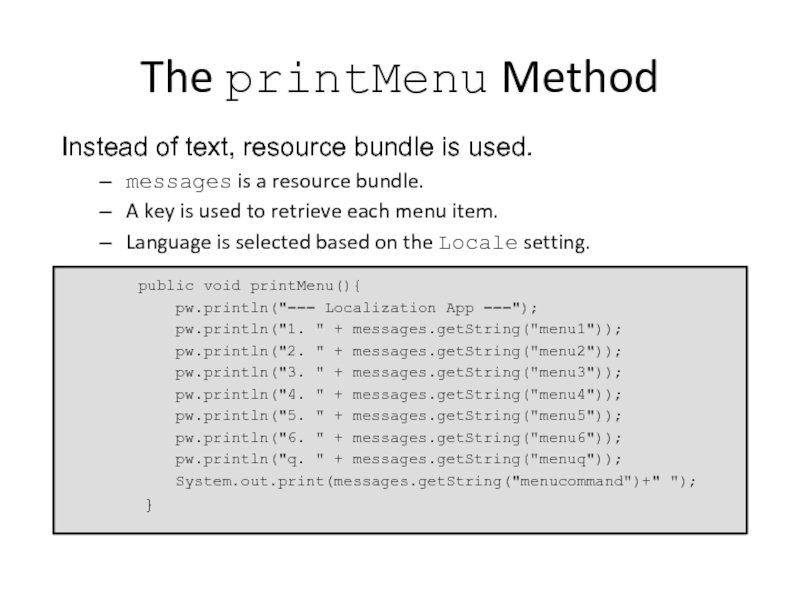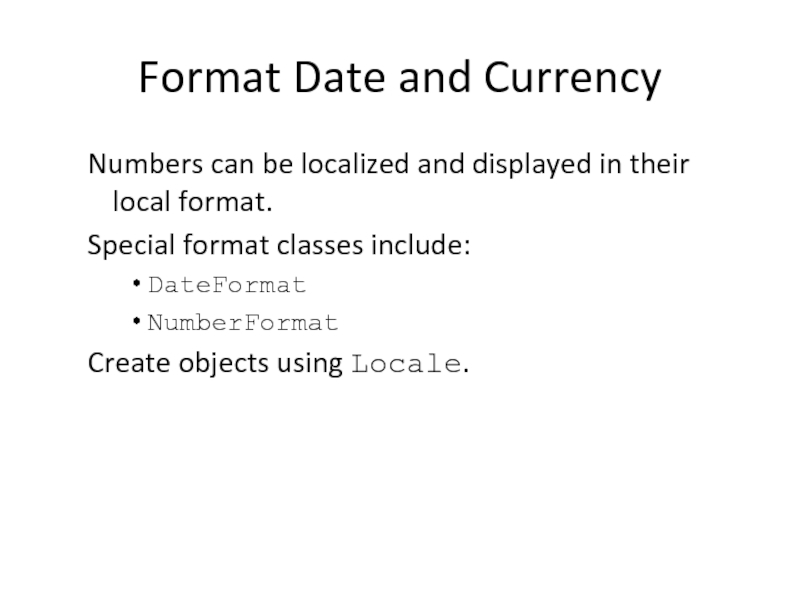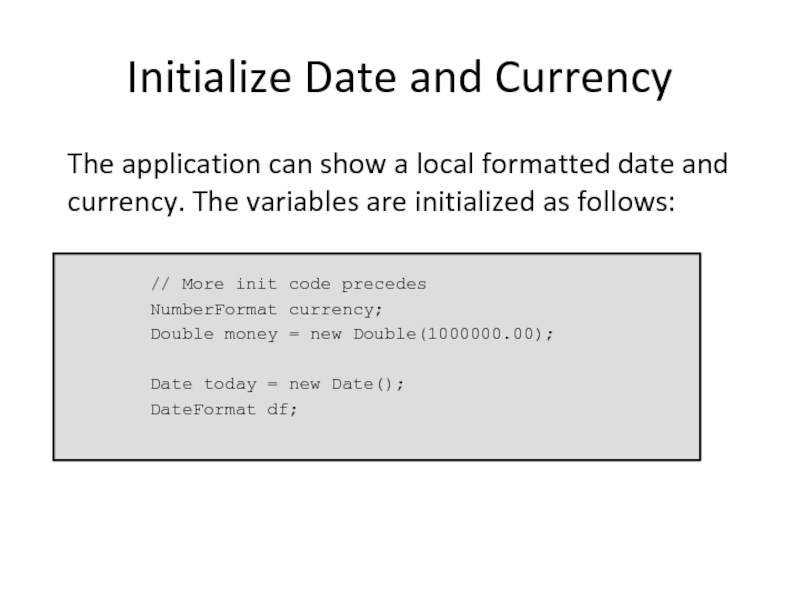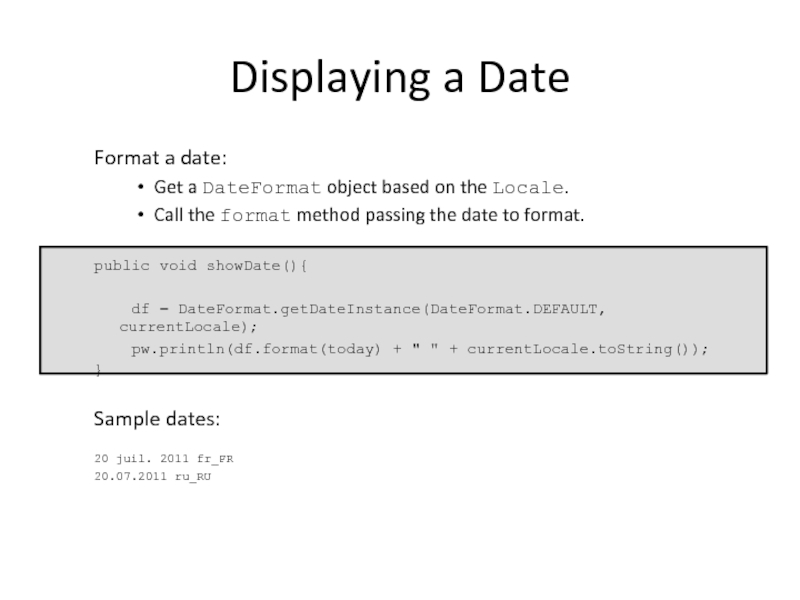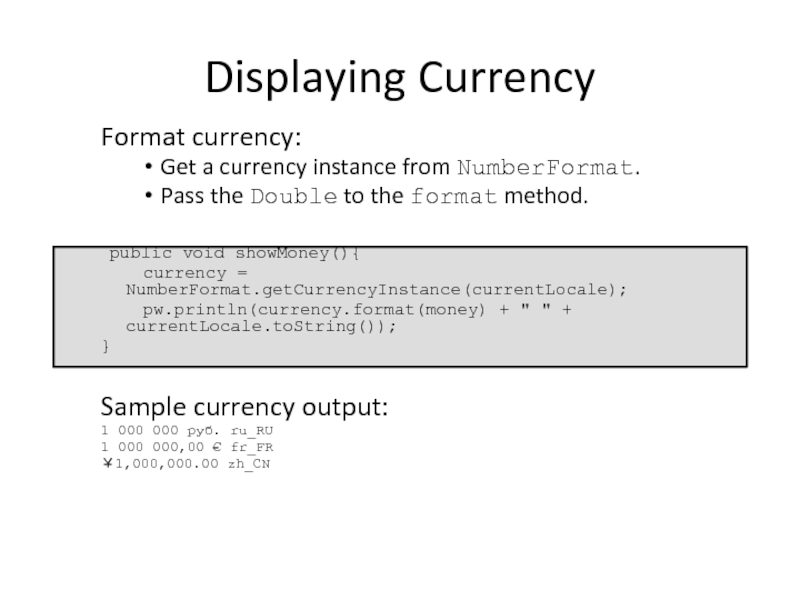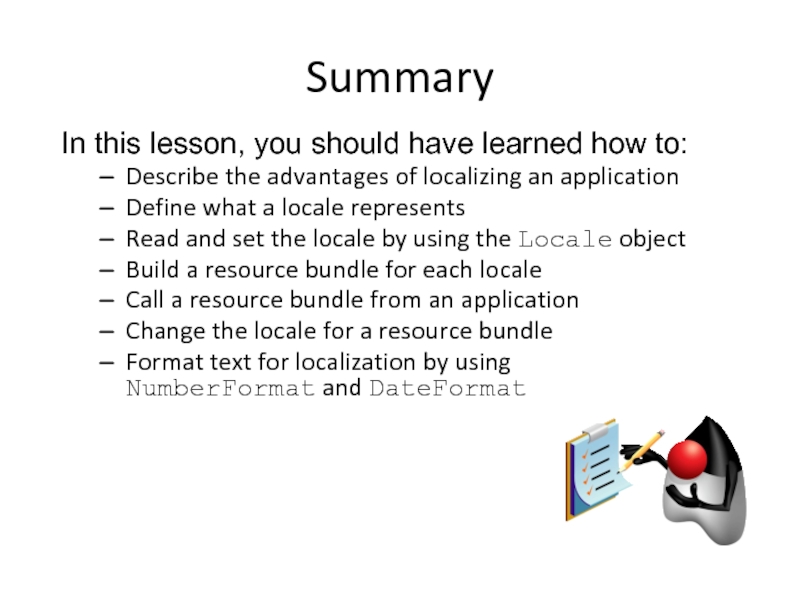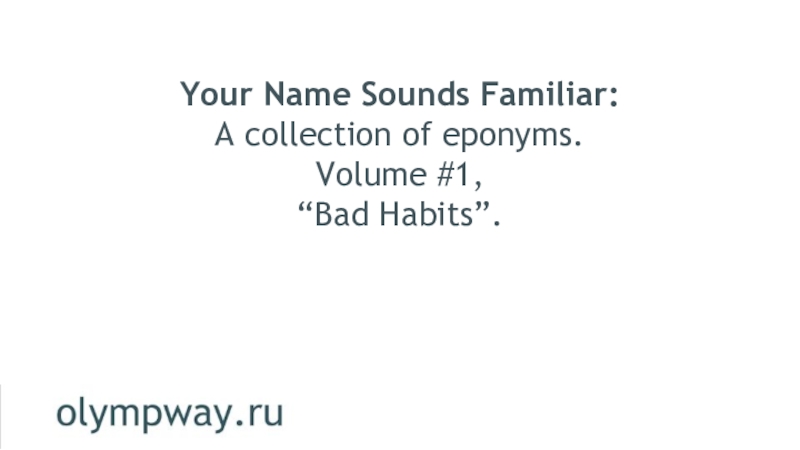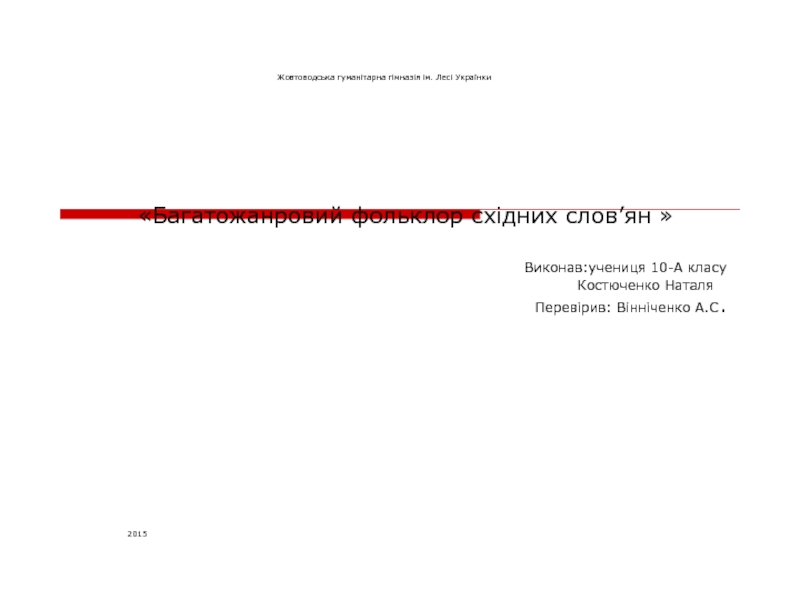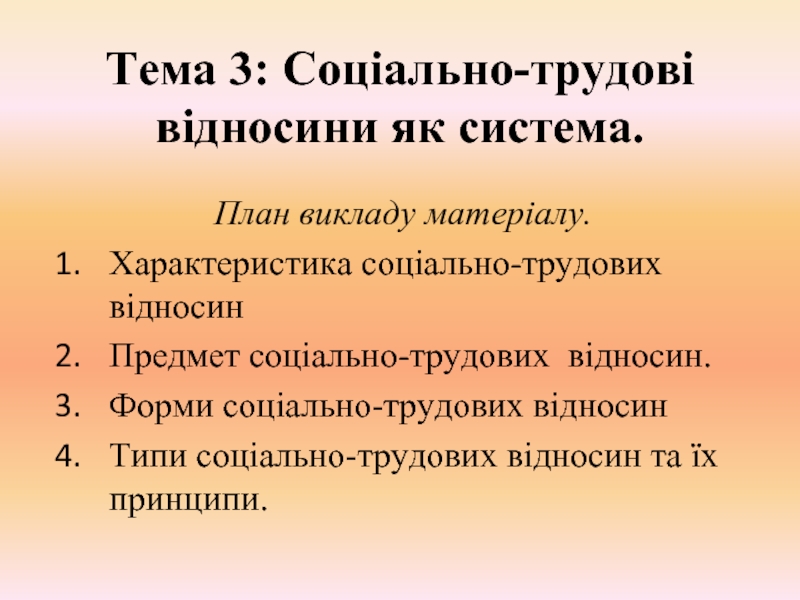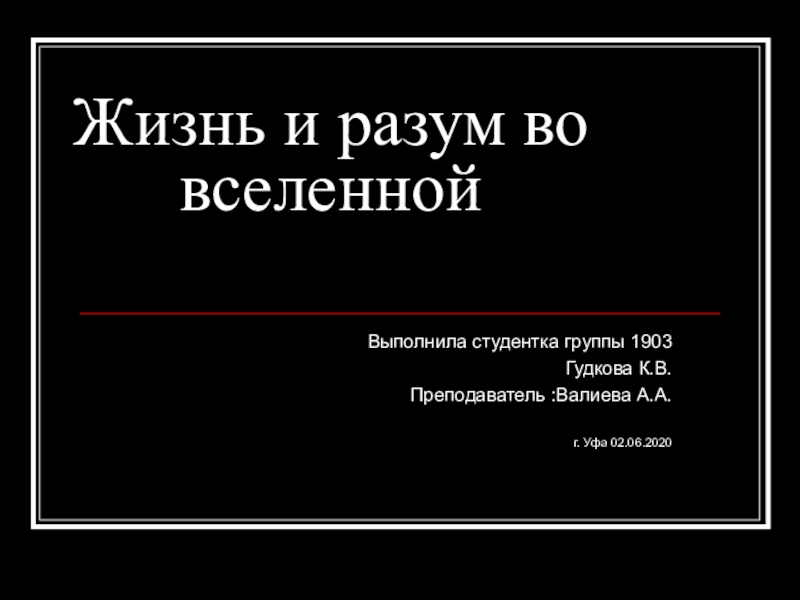Слайд 2Objectives
After completing this lesson, you should be able to:
Describe the
advantages of localizing an application
Define what a locale represents
Read and
set the locale by using the Locale object
Build a resource bundle for each locale
Call a resource bundle from an application
Change the locale for a resource bundle
Format text for localization by using NumberFormat and DateFormat
Слайд 3Why Localize?
The decision to create a version of an application
for international use often happens at the start of a
development project.
Region- and language-aware software
Dates, numbers, and currencies formatted for specific countries
Ability to plug in country-specific data without changing code
Слайд 4A Sample Application
Localize a sample application:
Text-based user interface
Localize menus
Display currency
and date localizations
=== Localization App ===
1. Set to English
2. Set
to French
3. Set to Chinese
4. Set to Russian
5. Show me the date
6. Show me the money!
q. Enter q to quit
Enter a command:
Слайд 5Locale
A Locale specifies a particular language and country:
Language
An alpha-2
or alpha-3 ISO 639 code
“en” for English, “es” for Spanish
Always
uses lowercase
Country
Uses the ISO 3166 alpha-2 country code or UN M.49 numeric area code
"US" for United States, "ES" for Spain
Always uses uppercase
See The Java Tutorials for details of all standards used
Слайд 6Resource Bundle
The ResourceBundle class isolates locale-specific data:
Returns key/value pairs stored
separately
Can be a class or a .properties file
Steps to
use:
Create bundle files for each locale.
Call a specific locale from your application.
Слайд 7Resource Bundle File
Properties file contains a set of key/value pairs.
Each
key identifies a specific application component.
Special file names use language
and country codes.
Default for sample application:
Menu converted into resource bundle
MessageBundle.properties
menu1 = Set to English
menu2 = Set to French
menu3 = Set to Chinese
menu4 = Set to Russian
menu5 = Show the Date
menu6 = Show me the money!
menuq = Enter q to quit
Слайд 8Sample Resource Bundle Files
Samples for French and Chinese
MessagesBundle_fr_FR.properties
menu1 = Régler
à l'anglais
menu2 = Régler au français
menu3 = Réglez chinoise
menu4 =
Définir pour la Russie
menu5 = Afficher la date
menu6 = Montrez-moi l'argent!
menuq = Saisissez q pour quitter
MessagesBundle_zh_CN.properties
menu1 = 设置为英语
menu2 = 设置为法语
menu3 = 设置为中文
menu4 = 设置到俄罗斯
menu5 = 显示日期
menu6 = 显示我的钱!
menuq = 输入q退出
Слайд 9Quiz
Which bundle file represents a language of Spanish and a
country code of US?
MessagesBundle_ES_US.properties
MessagesBundle_es_es.properties
MessagesBundle_es_US.properties
MessagesBundle_ES_us.properties
Слайд 10Initializing the Sample Application
PrintWriter pw = new PrintWriter(System.out, true);
// More init code here
Locale usLocale
= Locale.US;
Locale frLocale = Locale.FRANCE;
Locale zhLocale = new Locale("zh", "CN");
Locale ruLocale = new Locale("ru", "RU");
Locale currentLocale = Locale.getDefault();
ResourceBundle messages = ResourceBundle.getBundle("MessagesBundle", currentLocale);
// more init code here
public static void main(String[] args){
SampleApp ui = new SampleApp();
ui.run();
}
Слайд 11Sample Application: Main Loop
public void run(){
String line = "";
while (!(line.equals("q"))){
this.printMenu();
try { line = this.br.readLine(); }
catch (Exception e){ e.printStackTrace(); }
switch (line){
case "1": setEnglish(); break;
case "2": setFrench(); break;
case "3": setChinese(); break;
case "4": setRussian(); break;
case "5": showDate(); break;
case "6": showMoney(); break;
}
}
}
Слайд 12The printMenu Method
Instead of text, resource bundle is used.
messages is
a resource bundle.
A key is used to retrieve each menu
item.
Language is selected based on the Locale setting.
public void printMenu(){
pw.println("=== Localization App ===");
pw.println("1. " + messages.getString("menu1"));
pw.println("2. " + messages.getString("menu2"));
pw.println("3. " + messages.getString("menu3"));
pw.println("4. " + messages.getString("menu4"));
pw.println("5. " + messages.getString("menu5"));
pw.println("6. " + messages.getString("menu6"));
pw.println("q. " + messages.getString("menuq"));
System.out.print(messages.getString("menucommand")+" ");
}
Слайд 13Changing the Locale
To change the Locale:
Set currentLocale to the desired
language.
Reload the bundle by using the current locale.
public void setFrench(){
currentLocale = frLocale;
messages = ResourceBundle.getBundle("MessagesBundle", currentLocale);
}
Слайд 14Sample Interface with French
After the French option is selected, the
updated user interface looks like the following:
=== Localization App ===
1.
Régler à l'anglais
2. Régler au français
3. Réglez chinoise
4. Définir pour la Russie
5. Afficher la date
6. Montrez-moi l'argent!
q. Saisissez q pour quitter
Entrez une commande:
Слайд 15Format Date and Currency
Numbers can be localized and displayed in
their local format.
Special format classes include:
DateFormat
NumberFormat
Create objects using Locale.
Слайд 16Initialize Date and Currency
The application can show a local formatted
date and currency. The variables are initialized as follows:
// More init code precedes
NumberFormat currency;
Double money = new Double(1000000.00);
Date today = new Date();
DateFormat df;
Слайд 17Displaying a Date
Format a date:
Get a DateFormat object based on
the Locale.
Call the format method passing the date to
format.
public void showDate(){
df = DateFormat.getDateInstance(DateFormat.DEFAULT, currentLocale);
pw.println(df.format(today) + " " + currentLocale.toString());
}
Sample dates:
20 juil. 2011 fr_FR
20.07.2011 ru_RU
Слайд 18Customizing a Date
DateFormat constants include:
SHORT: Is completely numeric, such as
12.13.52 or 3:30pm
MEDIUM: Is longer, such as Jan 12, 1952
LONG:
Is longer, such as January 12, 1952 or 3:30:32pm
FULL: Is completely specified, such as Tuesday, April 12, 1952 AD or 3:30:42pm PST
SimpleDateFormat:
A subclass of a DateFormat class
Слайд 19Displaying Currency
Format currency:
Get a currency instance from NumberFormat.
Pass the Double
to the format method.
public void showMoney(){
currency =
NumberFormat.getCurrencyInstance(currentLocale);
pw.println(currency.format(money) + " " + currentLocale.toString());
}
Sample currency output:
1 000 000 руб. ru_RU
1 000 000,00 € fr_FR
¥1,000,000.00 zh_CN
Слайд 20Quiz
Which date format constant provides the most detailed information?
LONG
FULL
MAX
COMPLETE
Слайд 21Summary
In this lesson, you should have learned how to:
Describe the
advantages of localizing an application
Define what a locale represents
Read and
set the locale by using the Locale object
Build a resource bundle for each locale
Call a resource bundle from an application
Change the locale for a resource bundle
Format text for localization by using
NumberFormat and DateFormat
